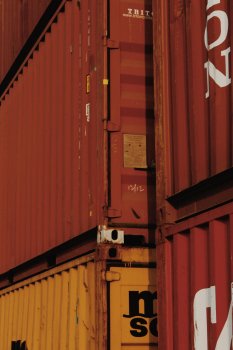To ensure resistance to salt water and humidity, it is essential to select suitable materials and apply specific protection techniques. Some of the common options include:
- Waterproof materials: It is recommended to use packaging materials that are inherently waterproof or have moisture barrier properties. Examples are plastic sheeting such as high-density polyethylene (HDPE) or polypropylene (PP), which prevent moisture from seeping into the packaging and damaging the products.
- Metal coatings: In some cases, metal coatings such as aluminium are applied to packaging materials to provide additional protection against moisture and salt water. These coatings act as an additional barrier, preventing corrosion and damage caused by direct exposure to moisture.
- Barrier films: There are special barrier films specifically designed for packaging in sea transport. These films are composed of multiple layers including materials such as nylon or high-density polyethylene (HDPE), which provide additional protection against moisture and salt water ingress.
2. Protection against shocks and vibrations: During sea transport, goods are exposed to sudden movements, shocks and vibrations due to sea conditions and port handling. It is imperative that your packaging has the ability to absorb impact and protect the contents from damage. To achieve this, you can use cushioning materials such as polyethylene or polyurethane foams, bubble sheets and corner protectors. These elements provide an additional layer of protection and minimise the risk of damage during transport.
3. Structural stability: Packaging used in sea transport must be robust enough to withstand the rigorous conditions to which it will be exposed. Your goods are likely to be subject to stacking, loading and unloading, and handling in ship loading areas and port warehouses. It is therefore vital that your packaging maintains its structural integrity even in situations of heavy loads or compression. Consider using strong materials, such as high-density plywood, fibreglass-reinforced plastic or metal containers, to ensure the safety of your goods throughout the journey.
4. Corrosion-resistant packaging: Sea transport presents particular challenges in terms of corrosion due to prolonged exposure to moisture and saline environments. Proper corrosion-resistant packaging is essential to protect your goods during transport. You can apply corrosion-resistant packaging techniques, such as the use of VCI (volatile corrosion inhibitor) bags and wraps, which emit chemical compounds that actively protect against corrosion. In addition, you can consider corrosion-resistant coatings, such as special paints, corrosion-inhibiting oils or protective coatings for metals.
5. Clear labelling and marking: A key aspect of sea transport packaging is proper labelling and marking. This includes clearly indicating the fragility of the contents, handling instructions and any special requirements. Visible and durable labels on packaging will help transport managers handle your goods correctly and minimise the risk of damage. It also considers the use of additional signage, such as direction arrows, to ensure proper handling throughout the process.








